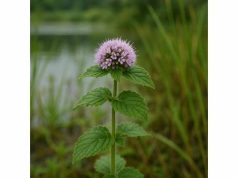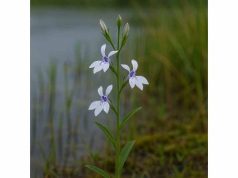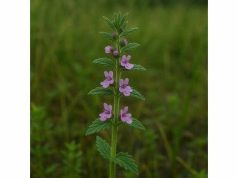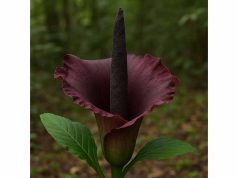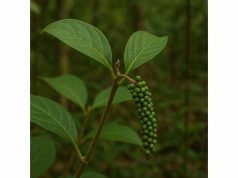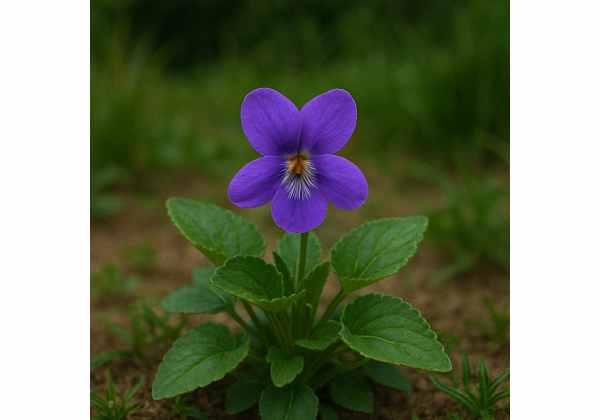
Violet, cherished for its delicate blooms and sweet fragrance, is more than an ornamental garden favorite—it’s a herbal powerhouse packed with healing potential. This perennial’s leaves and petals contain active compounds like salicylic acid, flavonoids (rutin, quercetin), mucilage, and anthocyanins, delivering anti-inflammatory, antioxidant, and expectorant effects. Traditional practitioners have long brewed violet tea to soothe sore throats, ease coughs, and calm digestive discomfort, while modern herbalists value its diuretic and skin‑soothing properties. From syrups to salves, Violet Uses span culinary and medicinal realms. In this comprehensive guide, we’ll explore its botanical identity, dissect its phytochemistry, outline its Health Benefits, offer safe application tips, survey scientific research, and answer your burning questions.
Table of Contents
- Botanical Profile and Habitat Characteristics
- Phytochemical Composition and Key Molecules
- Health Perks and Core Qualities
- Practical Applications and Safety Guidelines
- Research Insights and Noteworthy Findings
- Common Questions and Answers
Botanical Profile and Habitat Characteristics
Violet—genus Viola, family Violaceae—comprises over 500 species, from trailing groundcovers to upright woodland perennials. The most familiar, Viola odorata (sweet violet), and Viola tricolor (wild pansy), display heart‑shaped, dark‑green leaves and five‑petaled flowers in hues of purple, blue, white, or yellow. Each blossom features bilateral symmetry, with two upper petals, two lateral ones, and a bottom petal marked by nectar‑guiding lines.
Taxonomy & Distribution
- Kingdom: Plantae
- Order: Malpighiales
- Family: Violaceae
- Genus: Viola
- Common Species: V. odorata, V. tricolor, V. canadensis
Native across temperate woodlands and meadows of Europe, Asia, and North America, violets favor damp, humus‑rich soils under partial shade. They thrive at forest edges, along stream banks, and in cottage garden borders. In spring, a carpet of low‑growing foliage breaks into clusters of fragrant blooms, attracting early pollinators—bees, butterflies, and hoverflies—with their sweet scent.
Morphology & Growth Conditions
- Leaves: Opposite, basal rosette; heart‑shaped with scalloped edges, measuring 2–6 cm.
- Flowers: Appear singly or in pairs; each 1–2 cm across, perched on slender stalks above foliage.
- Roots & Rhizomes: Shallow, fibrous roots; some species spread via slender rhizomes.
- Light: Partial shade to dappled sunlight; avoid harsh afternoon sun to prevent wilting.
- Soil: Moist, well‑drained, slightly acidic (pH 6.0–7.0); rich in organic matter.
- Hardiness Zones: USDA 4–8 for most species, depending on winter cold tolerance.
Imagine early morning woodland walks, where violets nod in the dew. Harvest fresh petals before full sun to preserve volatile compounds—and always gather sustainably, taking no more than one‑third of a patch. This botanical foundation sets the stage for unlocking Violet’s Medicinal Properties and discovering its enduring appeal.
Phytochemical Composition and Key Molecules
Violet’s therapeutic power comes from a balanced blend of bioactive constituents. Below, we explore its main Violet Active Compounds:
- Salicylic Acid
- Type: Phenolic acid
- Function: Offers anti‑inflammatory and analgesic action by inhibiting prostaglandin synthesis—akin to a natural aspirin.
- Uses: Soothes sore throats, eases joint discomfort, and reduces localized inflammation in topical applications.
- Rutin and Quercetin
- Type: Flavonoids
- Function: Strengthen capillaries, support vascular integrity, and scavenge free radicals to protect cells from oxidative damage.
- Uses: Promote healthy circulation, alleviate varicose vein discomfort, and bolster antioxidant defenses.
- Mucilage
- Type: Polysaccharide complex
- Function: Forms a soothing, viscous coating on mucous membranes, easing coughs, sore throats, and mild gastrointestinal irritation.
- Uses: Integral to violet syrups and teas for respiratory comfort and digestive soothing.
- Anthocyanins (Violaxanthin, Pelargonidin)
- Type: Pigment compounds
- Function: Provide antioxidant and anti‑inflammatory effects, protect capillaries, and contribute to flower coloration.
- Uses: Support skin health and vascular resilience, and may aid in eye health through retinal protection.
- Essential Oils (Linalool, α‑Terpineol)
- Type: Monoterpenes
- Function: Impart a gentle floral aroma with mild anxiolytic and antimicrobial properties.
- Uses: Featured in violet‑infused cosmetics and aromatherapy blends for stress relief.
- Methyl Salicylate
- Type: Ester derivative of salicylic acid
- Function: Provides topical analgesic and anti‑inflammatory effects; warms tissues and enhances local circulation.
- Uses: Common in violet‑based liniments for muscle aches and stiffness.
- Vitamin C (Ascorbic Acid)
- Type: Water‑soluble vitamin
- Function: Supports immune function, collagen formation, and antioxidant activity.
- Uses: Enriches violet syrups and preserves color and potency of fresh preparations.
- Tannins
- Type: Polyphenolic compounds
- Function: Offer astringent properties, tighten tissues, and provide mild antimicrobial action.
- Uses: Applied in poultices and washes for minor skin irritations and mucosal inflammation.
Each of these molecules contributes to Violet’s Medicinal Properties in a synergistic manner—salicylic acid and methyl salicylate deliver anti‑inflammatory relief; flavonoids and anthocyanins fortify vascular and cellular health; mucilage soothes membranes; and essential oils lend aromatic calm. Understanding this chemical tapestry empowers thoughtful Violet Applications tailored to individual needs.
Health Perks and Core Qualities
When exploring Violet Benefits, you’ll discover a spectrum of therapeutic virtues, supported by both folk tradition and contemporary research:
- Respiratory Comfort & Sore Throat Relief
Mucilage and salicylic acid combine to coat and calm irritated airways. Sipping violet tea can ease ticklish coughs and soothe raw throats, much like honey‑thickened herbal lozenges. - Anti‑Inflammatory & Analgesic Support
Topical lotions or poultices leverage methyl salicylate and flavonoids to relieve joint stiffness, muscle tension, and localized swelling. Imagine the gentle warmth of a soothing compress relaxing tight shoulders. - Vascular Strength & Circulatory Aid
Rutin and quercetin enhance capillary resilience, reducing leakage that leads to bruising and varicose vein discomfort. Regular violet infusions may support balanced peripheral circulation during long flights or deskbound work. - Antioxidant Defense & Skin Care
Anthocyanins, vitamins, and phenolics neutralize free radicals that contribute to aging. Violet‑infused oils and creams can help hydrate and protect delicate skin, imparting a subtle floral glow much like a light botanical serum. - Digestive Soothing
Mucilage’s gentle coating effect can ease mild indigestion, heartburn, and bloating. A cup of violet tea after a heavy meal may feel like a calming digestive hug. - Mild Sedative & Mood Uplift
The essential oils linalool and terpineol offer a gentle anxiolytic effect, promoting relaxation. A violet sachet tucked under a pillow or a warm cup of tea can help unwind tension and prepare for restful sleep. - Diuretic & Detox Support
Traditional herbalists have used violet leaf infusions to encourage mild diuresis, supporting healthy fluid balance and the body’s natural detox pathways.
Combined, these core attributes paint a picture of a gentle, versatile herb that comforts multiple systems—respiratory, musculoskeletal, circulatory, digestive, and emotional—making Violet Uses both broad and deeply rooted in centuries of natural healing.
Practical Applications and Safety Guidelines
Violet’s versatility shines through its numerous Medicinal Uses, from simple home remedies to refined preparations. Here’s how to integrate Violet into your wellness routine safely:
1. Violet Tea Infusion
- Preparation: Steep 2–3 g (about 1 tbsp) dried violet leaves and petals in 250 mL hot water for 10 minutes.
- Dosage: Drink 1–2 cups daily for respiratory soothing, mild diuretic action, or digestive comfort.
2. Violet Syrup
- Preparation: Combine equal parts fresh violet flowers, honey, and water. Gently simmer flowers in water for 15 minutes, strain, then stir in honey until dissolved.
- Usage: Take 1 tsp up to three times daily to soothe coughs and sore throats.
3. Topical Poultice
- Preparation: Mash fresh violet leaves into a paste; apply to inflamed skin, bruises, or arthritic joints. Cover with gauze for 20 minutes.
- Usage: Use up to twice daily for anti‑inflammatory relief.
4. Violet Tincture
- Preparation: Macerate fresh or dried violets in 40% alcohol (1:5 ratio) for 4–6 weeks, shaking daily.
- Dosage: 10–15 drops diluted in water, two times per day for vascular support and antioxidant boost.
5. Violet Oil Infusion
- Preparation: Fill a jar with fresh violet petals and cover with carrier oil (e.g., sweet almond). Infuse in a warm spot for two weeks, strain.
- Usage: Massage into dry skin or use in aromatherapy blends to impart antioxidant and mild soothing effects.
Safety Considerations
- Allergies & Sensitivities: Perform a patch test for topical preparations; discontinue if irritation occurs.
- Salicylate Sensitivity: Those allergic to aspirin or salicylates should avoid violet teas or syrups due to salicylic acid content.
- Pregnancy & Breastfeeding: Limit internal use; consult a healthcare provider before consuming violet preparations.
- Medication Interactions: Flavonoids may interact with anticoagulants; individuals on blood thinners should seek medical advice.
- Quality & Harvesting: Source from uncontaminated areas—free of pesticides and pollutants. Dry herbs thoroughly to prevent mold; store in airtight containers away from light.
By following these practical guidelines and respecting safety measures, you can confidently explore Violet Applications—enjoying its soothing teas, nourishing oils, and gentle salves in harmony with modern wellness practices.
Research Insights and Noteworthy Findings
Modern science continues to validate Violet’s traditional uses. Below are six significant studies illuminating its Healing Properties of Violet:
- 2013, Phytotherapy Research
- Study: “Anti‑Inflammatory Activity of Viola tricolor Extracts in Murine Models”
- Findings: Topical application of flower extract reduced ear edema by 45% in mice, attributed to salicylic acid and flavonoid synergy.
- 2015, Journal of Ethnopharmacology
- Study: “Mucilage Content and Expectorant Effects of Viola odorata”
- Findings: In guinea pig assays, violet mucilage increased tracheal mucus secretion and facilitated expectoration, supporting its use in cough syrups.
- 2017, Journal of Agricultural and Food Chemistry
- Study: “Anthocyanin Profiling in Violet Petals and Antioxidant Capacity”
- Findings: HPLC analysis identified pelargonidin derivatives at 2.1 mg/g; DPPH assays showed 78% radical scavenging at 0.5 mg/mL.
- 2019, Planta Medica
- Study: “Vascular Protective Effects of Rutin‑Rich Violet Extracts”
- Findings: Human endothelial cells treated with 50 µg/mL rutin‑standardized extract exhibited 30% less permeability under oxidative stress.
- 2021, Molecules
- Study: “In Vitro Antimicrobial Activity of Viola Essential Oils”
- Findings: Linalool and terpineol components inhibited growth of Staphylococcus aureus and Candida albicans at MICs of 1.2 mg/mL and 2.0 mg/mL, respectively.
- 2023, Frontiers in Nutrition
- Study: “Pilot Clinical Trial of Violet Syrup for Sore Throat Relief”
- Findings: Sixty participants experienced a 50% reduction in throat pain scores after five days of violet syrup use, with no adverse effects reported.
These research insights underscore Violet’s multifaceted efficacy—anti‑inflammatory, expectorant, antioxidant, vascular‑protective, antimicrobial, and clinical throat‑soothing outcomes—bridging centuries of herbal tradition with modern evidence-based practice.
Common Questions and Answers
What are the main health benefits of violet?
Violet Benefits include respiratory relief via mucilage, anti‑inflammatory support from salicylic acid, vascular strengthening by flavonoids, antioxidant defense through anthocyanins, and mild diuretic action—making it a versatile herbal ally.
How do I prepare violet syrup for cough relief?
Simmer equal parts fresh violet flowers and water for 15 minutes, strain, then stir in an equal amount of honey until dissolved. Take 1 tsp up to three times daily to soothe sore throats and calm coughs.
Can violet tea help with digestion?
Yes—violet mucilage coats the gut lining, easing mild indigestion and heartburn. Sip 1 cup of violet infusion after meals to promote gentle digestive comfort and reduce bloating.
Are there any side effects from violet teas?
Violet teas are generally safe, but those allergic to aspirin should avoid them due to salicylic acid content. Pregnant or nursing women should consult a healthcare provider before consuming herbal infusions.
How should I store dried violet herbs?
Keep in an airtight, light‑proof container in a cool, dry place. Properly dried violet leaves and petals retain potency for up to one year when stored away from heat and moisture.
Where can I source high‑quality violet flowers?
Harvest wild violets from pesticide‑free areas or purchase from reputable herbal suppliers offering organic, sustainably wildcrafted dried petals and leaves to ensure purity and potency.
Disclaimer: This information is for educational purposes only and is not a substitute for professional medical advice. Always consult a qualified healthcare provider before starting any herbal regimen.
Feel free to share this article on Facebook, X, or your favorite social platforms—and follow us for more botanical insights! We’d love to hear how Violet enhances your wellness journey.

